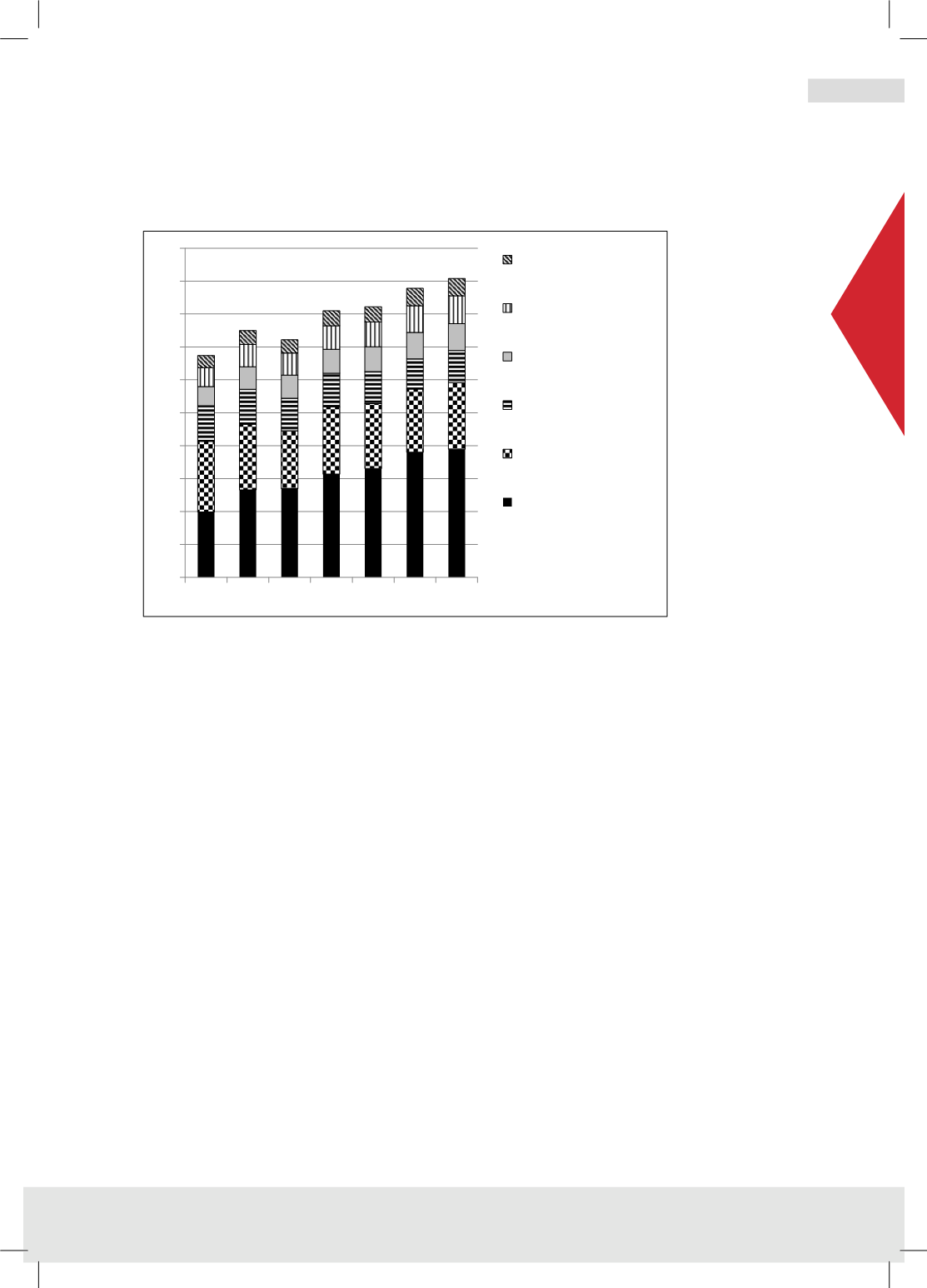

البحـث الأول
مجلة النفط والتعاون العربي
161
العدد
- 2017
أربعون
المجلد الثالث و ال
2016
أوابك العلمية لعام
�
ص لبحوث العلمية الفائزة بجائزة
�
عدد خا
77
67
much lower than Freedonia’s especially for 2014 even if marine oils are included.
In another report
64
, Fuchs Petrolub forecast 2017 demand at 41.3 million tons a
year, ag
ain much lower than Freedonia’s.
Fig (21) - Sources: 72, 73 & 74
In 2007
75
, the Freedonia’s forecasts were higher but the economic and financial
crises of 2008 reduced expectations as evident by the declining demand numbers
of 2009. Consumption then was expected to reach 46.6 million tons a year in
2015
75
, a number that is unlikely to be reached in the period under discussion.
It is to be understood that additives are capturing increasing share of the lubricants
market as their rate of growth surpasses that of base oils
71
. The new performance
standards and the extended oil drain periods require better lubricant’s packages
and therefore higher groups and more additives.
According to Kline & Co.
71
, the additives market in 2014 was 4.2 million tons of
39.4 million tons of finished oils, or 11%. The same report suggests that additives
demand is expected to grow at 1.6% while base oils demand growth may only be
at 1.2%. This will exacerbate a base oil industry likely to suffer from excess
capacity.
Base oils capacity surplus was 6.5 million tons a year in 2000
64
but the surplus
disappeared in later years, due to capacity rationalization, only to start appearing
again recently.
0
5
10
15
20
25
30
35
40
45
50
2002 2007 2009 2012 2014 2017 2019
Central & South
America
Africa/Middle East
Eastern Europe
Western Europe
North America
Asia-Pacific
















